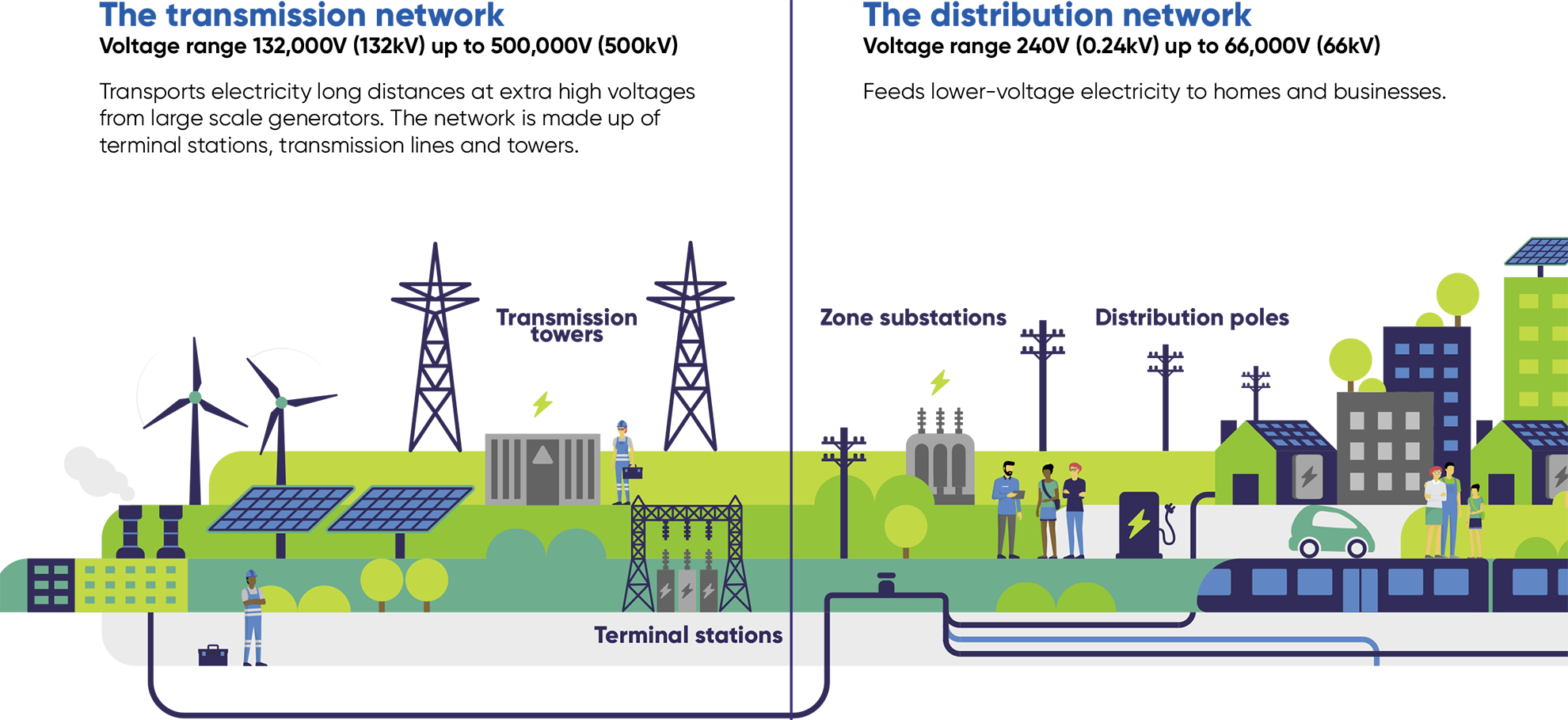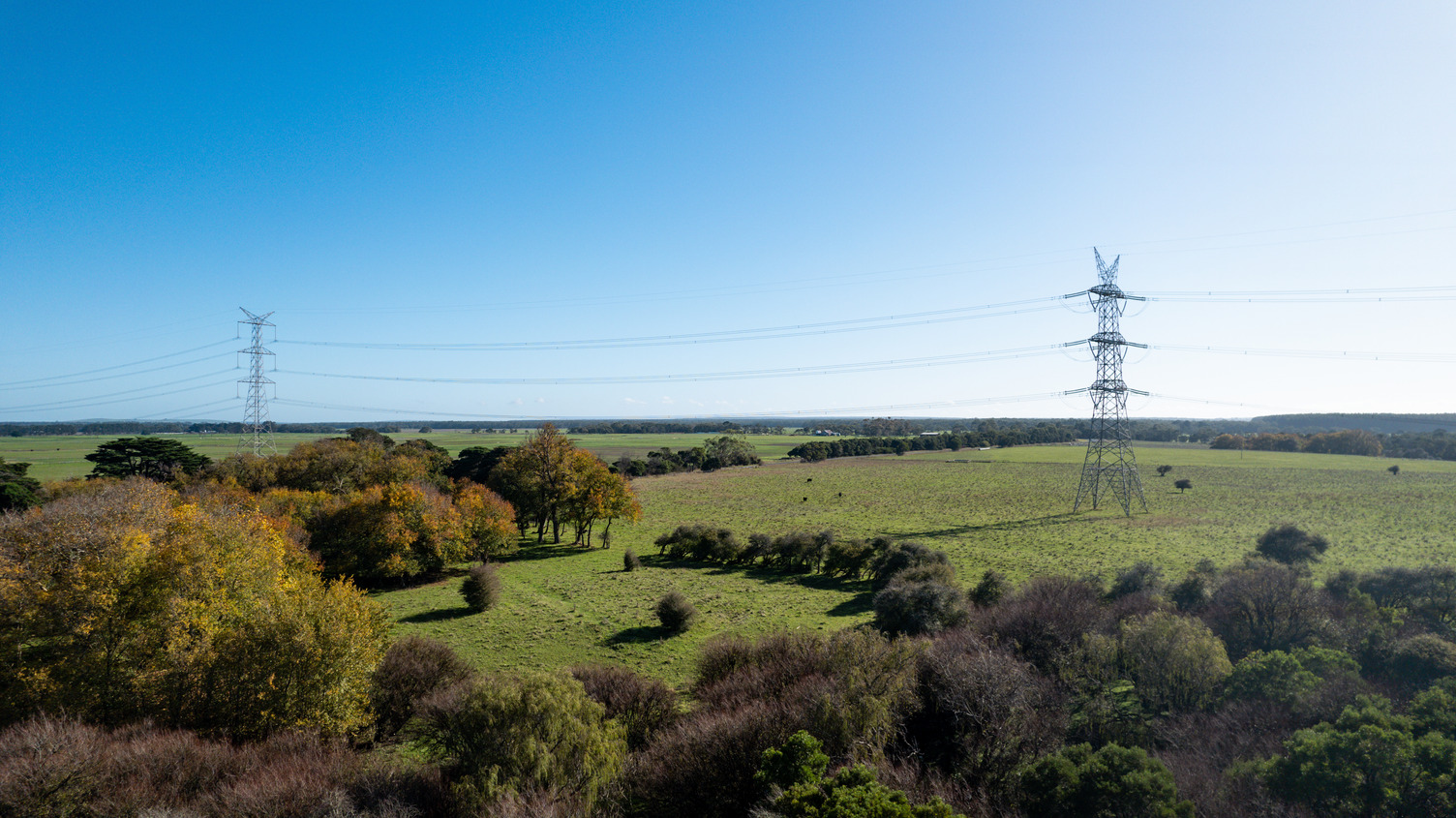About our electricity transmission network
We own and operate the transmission network in Victoria that supplies electricity to 6.6 million Victorians. We also help connect power to NSW, South Australia and Tasmania.
Our transmission lines carry electricity at high voltages of 220,000 volts (220kV) up to 500,000 volts (500kV), from where it’s generated (power stations and renewable energy sources) to areas where large amounts of electricity are used.
The voltage is then reduced at terminal stations before being supplied to homes and businesses by local distribution companies — AusNet, Citipower, Powercor, United Energy and Jemena.
Our transmission network spans over 6,600 kilometres of transmission lines supported by steel towers across public and private land.
Where our transmission lines cross privately owned land, they are generally built on easements. Easements provide rights and responsibilities for both landholders and AusNet.
We also have obligations to access land to clear, maintain and reduce vegetation within certain clearances around transmission lines under electricity safety legislation.
We work with thousands of landholders across Victoria, who play an important role in helping us safely and reliably operate the transmission network.


